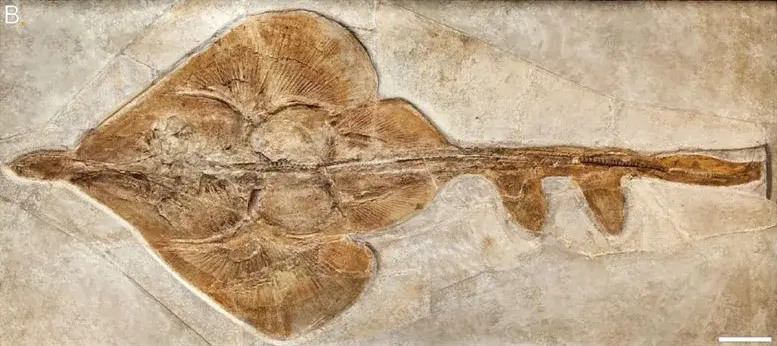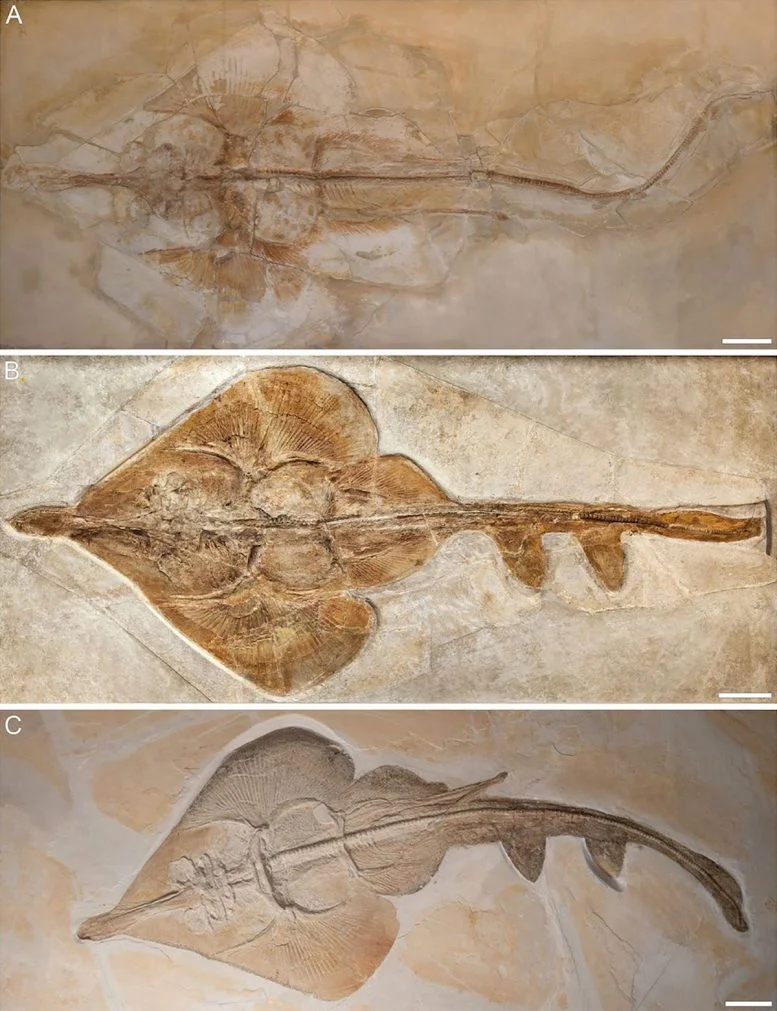Scientists discovered new 150-million-year-old stingray species
- March 26, 2024
- 0
A new type of fossil reef Aellopobatis bavarica, was discovered in Bavaria, Germany, and dates back to the Late Jurassic period. A new study recently published in the
A new type of fossil reef Aellopobatis bavarica, was discovered in Bavaria, Germany, and dates back to the Late Jurassic period. A new study recently published in the

A new type of fossil reef Aellopobatis bavarica, was discovered in Bavaria, Germany, and dates back to the Late Jurassic period. A new study recently published in the journal Paleontology Articles, An international group of scientists led by paleobiologist Julia Türcher from the University of Vienna has explored the amazing world of stingrays that lived 150 million years ago and discovered previously hidden diversity, including new types of rays.
This study greatly expands the understanding of these ancient cartilaginous fishes and provides a deeper understanding of the ancient marine ecosystem.
In her new study, paleobiologist Julia Türcher from the Institute of Paleontology at the University of Vienna examined 52 fossil rays from the Late Jurassic period. These rays are 150 million years old, dating from a time when Europe was mostly covered by sea, except for a few islands comparable to the modern Caribbean. Late Jurassic specimens are particularly valuable to scientists because they are among the oldest known, fully preserved ray specimens.
Since usually only the teeth of fossilized stingrays are preserved, such rare skeletal finds provide fascinating information about the early evolution of this group. Although exceptionally well-preserved fossils (from Germany, France, and Great Britain) have been known for some time, they remain largely undiscovered. Turcher’s research is the first comprehensive analysis of body shape changes in these rays.

The results show a greater diversity of holomorphic (fully preserved) rays in the Late Jurassic than previously thought. “Only three types of holomorphic rays from the Late Jurassic have been confirmed so far, but this study detected a total of five types,” says Türtscher.
Based on their analysis, the researchers were able to document and introduce a new, previously undiscovered stingray species, as well as confirming the existence of a fourth species that has been discussed for some time: Aellopobatis bavarica . This species, which can grow up to 170 cm in length, was previously thought to be a large form of the much smaller French species. Spathobatis bugesiacusIt is 60 cm long. However, after a detailed analysis of the structure of the skeleton and the shape of the body, scientists were able to show that: Aellopobatis bavarica It is a separate species.
The new results also show that these five species occur in very restricted areas, but the authors do not want to jump to conclusions about possible endemism: “Further research on the dental morphology of the specimens and subsequent comparisons with teeth isolated from other regions may be helpful.” “To determine the reconstruction of the paleogeographic distribution of Late Jurassic rays,” explains Türtscher.
The results of this new study not only contribute to the understanding of the biodiversity and evolution of stingrays in the Upper Jurassic, but also directly impact the identification of fossil stingray species known only from isolated teeth. Constant new discoveries about these fascinating animals provide insight into the dynamics of past marine ecosystems and underscore the importance of well-preserved fossils in reconstructing our geological past. “We can only make accurate inferences about living species if we understand the history of a group, including its evolution, adaptation to environmental factors that change over time, and the extinctions the group has faced throughout its evolutionary history. Second author Patrick L. Jambura, from the University’s Institute of Paleontology, said, “Paleobiological knowledge, evolution of species and allows us to better understand the dynamics of extinction, thus helping to develop more effective conservation measures for species currently in danger of extinction,” says Vienna.
Source: Port Altele
As an experienced journalist and author, Mary has been reporting on the latest news and trends for over 5 years. With a passion for uncovering the stories behind the headlines, Mary has earned a reputation as a trusted voice in the world of journalism. Her writing style is insightful, engaging and thought-provoking, as she takes a deep dive into the most pressing issues of our time.